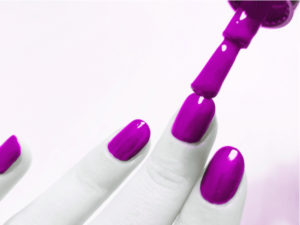In America, robots have long dominated manufacturing processes, but are they now coming for the services industry? According to the New York Times, mani-pedi customers may soon be served by robots rather than human beings. Ellen Rosen reports:
Omri Moran was on time for a first date, but the young woman, inexplicably, was late. She finally arrived, but skirted the question of her tardiness, saying “Never mind, you wouldn’t get it,” Mr. Moran recalled.
Not easily deterred, Mr. Moran, then the head of a geo-tracking start-up, persisted and discovered the reason: His date had ruined, and unsuccessfully tried to remedy, the new manicure she had gotten in anticipation of their meeting.
At the time of the date in 2016, he in fact didn’t get it, but the moment also provided an epiphany of sorts. “I’m one of those people when they see things that are bad, I just start thinking of solutions,” Mr. Moran said. “And I just wondered why it couldn’t be automated. And that’s kind of how we got rolling.”
He envisioned a robotic approach to manicures and began working on his idea that year, which morphed into the company Nimble. The concept, which two other start-ups are separately working on, essentially seeks to offer a simple way to provide foolproof nail polish. The companies, Clockwork and Coral, in addition to Mr. Moran’s Nimble, have developed distinct technologies anddifferent business models to offer customers a quick color change.
But don’t give up your regular appointment just yet. While all three companies have secured substantial outside financing, the devices are still being tested and altered before their full market debuts. And none of the three are offering a full salon-type manicure with shaping and buffing. Still, they could ultimately upend the growing nail care market.
As a market sector, manicures are a goal worth pursuing. Estimates peg the nail care market at close to $10 billion, and it could reach as high as $11.6 billion by 2027. While the size of the market for color alone has not been teased out, investors find it enticing. As Julie Bornstein, the founder of the shopping app the Yes, who has invested in Clockwork, said, the idea resonated because manicures could be time consuming: “I personally don’t like spending 40 minutes going to the nail salon.”
The technology incorporates some hardware — such as a robotic arm in some instances — to paint the nails, with software that relies on machine learning to distinguish a fingernail from the surrounding skin. Each company uses a different approach, yet essentially relies on the scanning of thousands of nail shapes to create a database. Cameras within the devices take photos of the nails of the individual user, a process repeated each time a manicure is done even on the same person. During the development, all three have tried to minimize the number of moving parts and rely more on software, because moving parts can break down over time.
Read more here.

